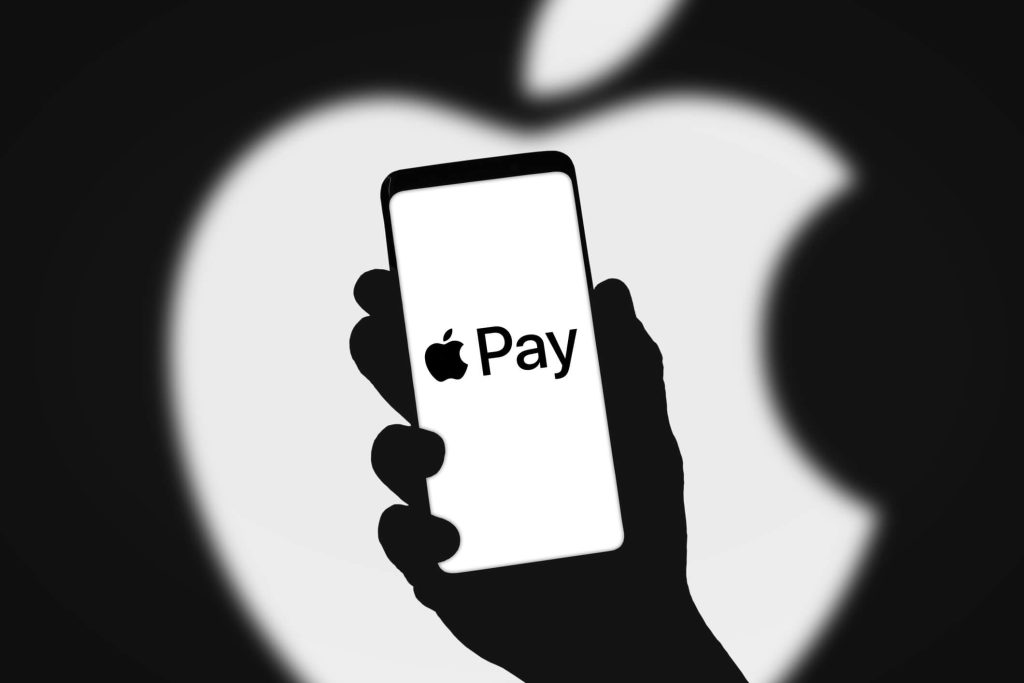In recent years, mobile payment solutions have gained significant traction in the business world. With the increasing popularity of smartphones and the convenience they offer, consumers are increasingly turning to mobile payment options for their transactions. One such solution that has gained widespread recognition is Apple Pay. This article will explore the benefits of accepting Apple Pay for automotive businesses and provide a comprehensive guide on how to implement this payment solution effectively.
What is Apple Pay?
Apple Pay is a mobile payment and digital wallet service developed by Apple Inc. It allows users to make payments using their Apple devices, such as iPhones, iPads, and Apple Watches. By securely storing credit and debit card information on the device, users can make contactless payments at participating retailers and businesses.
How does Apple Pay work?
Apple Pay utilizes Near Field Communication (NFC) technology to enable contactless payments. When a customer wants to make a payment, they simply hold their Apple device near a compatible payment terminal and authenticate the transaction using Touch ID or Face ID. The payment is then processed securely, without the need for physical cards or signatures.
Benefits of Accepting Apple Pay for Automotive Businesses

Accepting Apple Pay in automotive businesses offers a range of benefits, from enhancing customer experience to improving transaction security. As digital payments continue to gain popularity, automotive businesses can leverage Apple Pay to stay competitive and meet the evolving demands of consumers.
Convenience for customers
One of the primary advantages of accepting Apple Pay is the convenience it offers to customers. With just a tap of their device, customers can make payments quickly and securely, without the need to carry physical cards or cash. This convenience factor can significantly improve the overall customer experience, making it easier and more enjoyable for customers to do business with automotive establishments.
Faster and more efficient transactions
In addition to convenience, accepting Apple Pay can also speed up the transaction process. Traditional payment methods, such as cash or card payments, often require additional steps, such as counting change or signing receipts. With Apple Pay, the payment process is streamlined, allowing for faster and more efficient transactions. This can reduce wait times for customers, leading to increased customer satisfaction and improved operational efficiency for automotive businesses.
Enhanced customer experience
By accepting Apple Pay, automotive businesses can provide a more seamless and modern customer experience. The simplicity and ease of use associated with Apple Pay can leave a positive impression on customers, making them more likely to return and recommend the business to others. Additionally, the integration of Apple Pay with loyalty programs and rewards can further enhance the customer experience, incentivizing repeat business and fostering customer loyalty.
Increased sales and customer loyalty
Accepting Apple Pay can have a direct impact on sales and customer loyalty for automotive businesses. As more consumers adopt mobile payment solutions, businesses that offer Apple Pay acceptance are more likely to attract these customers. By providing a convenient and secure payment option, automotive businesses can increase their customer base and encourage repeat business. Additionally, the integration of Apple Pay with loyalty programs can incentivize customers to choose the business over competitors, further boosting sales and customer loyalty.
Implementing Apple Pay in automotive businesses

Implementing Apple Pay for your automotive business is a straightforward process. Here are the steps to get started:
Compatible devices and software requirements
To accept Apple Pay, automotive businesses need compatible devices and software. Apple Pay is supported on iPhone 6 and later models, iPad Air 2 and later models, and Apple Watch. Additionally, businesses need to ensure that their point-of-sale (POS) systems are equipped with NFC technology to enable contactless payments.
Setting up Apple Pay for your business
Setting up Apple Pay for an automotive business involves a few simple steps. Firstly, businesses need to ensure that they have a compatible POS system and payment processor that supports Apple Pay. They also need to contact their payment processor to enable Apple Pay acceptance. Once the necessary hardware and software are in place, businesses can follow the instructions provided by their payment processor to set up Apple Pay on their POS system.
Training employees on using Apple Pay
To ensure a smooth transition to accepting Apple Pay, it is essential to train employees on how to use the payment solution. This includes familiarizing them with the process of accepting Apple Pay payments, troubleshooting common issues, and educating them on the security features of Apple Pay. By providing comprehensive training, automotive businesses can ensure that their employees are confident and capable of handling Apple Pay transactions.
Integrating Apple Pay with existing payment systems
Integrating Apple Pay with existing payment systems can be a strategic move for businesses aiming to modernize their transaction processes, increase efficiency, and improve security. Explore the process of integrating Apple Pay into existing payment infrastructures, discuss the benefits, address common challenges, and provide practical guidance for businesses.
Compatibility with POS systems
Integrating Apple Pay with existing POS systems is crucial for a seamless payment experience. Most modern POS systems are equipped with NFC technology, making them compatible with Apple Pay. However, it is essential to verify compatibility with the POS system provider or payment processor to ensure a smooth integration.
Benefits of integrating Apple Pay with existing systems
Integrating Apple Pay with existing payment systems offers several benefits for automotive businesses. Firstly, it allows for a unified payment experience, where customers can choose to pay with Apple Pay alongside other payment methods. This flexibility can cater to a wider range of customer preferences and increase the likelihood of completing a sale. Additionally, integrating Apple Pay with existing systems can simplify accounting and reporting processes, as all transactions are consolidated within the same system.
Steps to integrate Apple Pay with your current payment infrastructure
Integrating Apple Pay with existing payment infrastructure involves a few key steps. Firstly, businesses need to ensure that their POS system is compatible with Apple Pay. If not, they may need to upgrade their hardware or software to enable contactless payments. Once compatibility is confirmed, businesses can work with their payment processor or POS system provider to enable Apple Pay acceptance. This may involve updating software, configuring settings, or obtaining necessary certifications. Finally, businesses should conduct thorough testing to ensure that the integration is functioning correctly before offering Apple Pay as a payment option to customers.
Enhancing Customer Experience with Apple Pay Integration
Integrating Apple Pay into your automotive business can significantly enhance the overall customer experience. Here’s how:
- Speed and Convenience: Apple Pay enables customers to make payments quickly and easily, reducing wait times at checkout. This convenience can leave a positive impression on customers, leading to increased satisfaction and loyalty.
- Personalization: Apple Pay allows businesses to offer personalized rewards and loyalty programs to their customers. By leveraging customer data, businesses can tailor offers and incentives based on individual preferences, fostering stronger customer relationships.
- Contactless Service: In the wake of the COVID-19 pandemic, contactless payments have become increasingly important. By accepting Apple Pay, automotive businesses can provide a safer and more hygienic payment option, minimizing physical contact between customers and staff.
- Seamless Online and Offline Experience: Apple Pay offers a seamless integration between online and offline transactions. Customers can make purchases through your website or app and seamlessly transition to in-person transactions at your physical location, providing a consistent and convenient experience.
Increasing Sales and Revenue through Apple Pay Adoption
Accepting Apple Pay can have a positive impact on the sales and revenue of automotive businesses. Here’s how:
- Impulse Purchases: Apple Pay’s ease of use and convenience can encourage impulse purchases. Customers are more likely to make additional purchases when the payment process is quick and frictionless, leading to increased sales.
- Higher Average Transaction Value: Studies have shown that customers tend to spend more when using digital payment methods like Apple Pay. By accepting this payment option, automotive businesses can potentially increase their average transaction value.
- Attracting Tech-Savvy Customers: Apple Pay appeals to tech-savvy individuals who prefer digital payment options. By accepting Apple Pay, automotive businesses can attract this customer segment, potentially expanding their customer base and driving higher sales.
- Competitive Advantage: Offering Apple Pay as a payment option can give automotive businesses a competitive edge. By staying ahead of the curve and embracing innovative payment solutions, businesses can differentiate themselves from competitors and attract more customers.
Addressing concerns and challenges
One of the primary concerns for automotive businesses when adopting new payment methods is security. However, Apple Pay offers robust security features that address these concerns:
Security concerns and how Apple Pay addresses them
One common concern associated with mobile payments is security. However, Apple Pay addresses these concerns through its robust security features. As mentioned earlier, Apple Pay does not store actual card numbers on the device or Apple servers. Instead, it uses tokenization and a unique Device Account Number to ensure that card information remains secure. Additionally, Apple Pay requires biometric authentication, such as Touch ID or Face ID, for each transaction, adding an extra layer of security.
Dealing with customer skepticism
Some customers may be skeptical or hesitant to adopt mobile payment solutions like Apple Pay. To address this skepticism, automotive businesses can educate customers about the security features and benefits of Apple Pay. This can be done through signage, informational materials, or direct communication with customers. Additionally, offering incentives, such as exclusive discounts or rewards, for using Apple Pay can help overcome customer skepticism and encourage adoption.
Training employees to handle Apple Pay-related issues
To ensure a smooth customer experience, it is crucial to train employees on how to handle Apple Pay-related issues. This includes troubleshooting common problems, such as connectivity issues or transaction errors, and providing guidance on how to assist customers who may be unfamiliar with Apple Pay. By equipping employees with the necessary knowledge and skills, automotive businesses can address any concerns or challenges that may arise during the adoption of Apple Pay.
Conclusion
As the automotive industry continues to evolve, embracing innovative payment solutions like Apple Pay is crucial for businesses to stay competitive and meet customer expectations. By accepting Apple Pay, automotive businesses can enhance customer experience, increase sales and revenue, and address security concerns. With a seamless integration process and the numerous benefits it offers, Apple Pay is undoubtedly the future of payments in the automotive sector. So, don’t wait any longer – start accepting Apple Pay and unlock the potential for growth and success in your automotive business.
